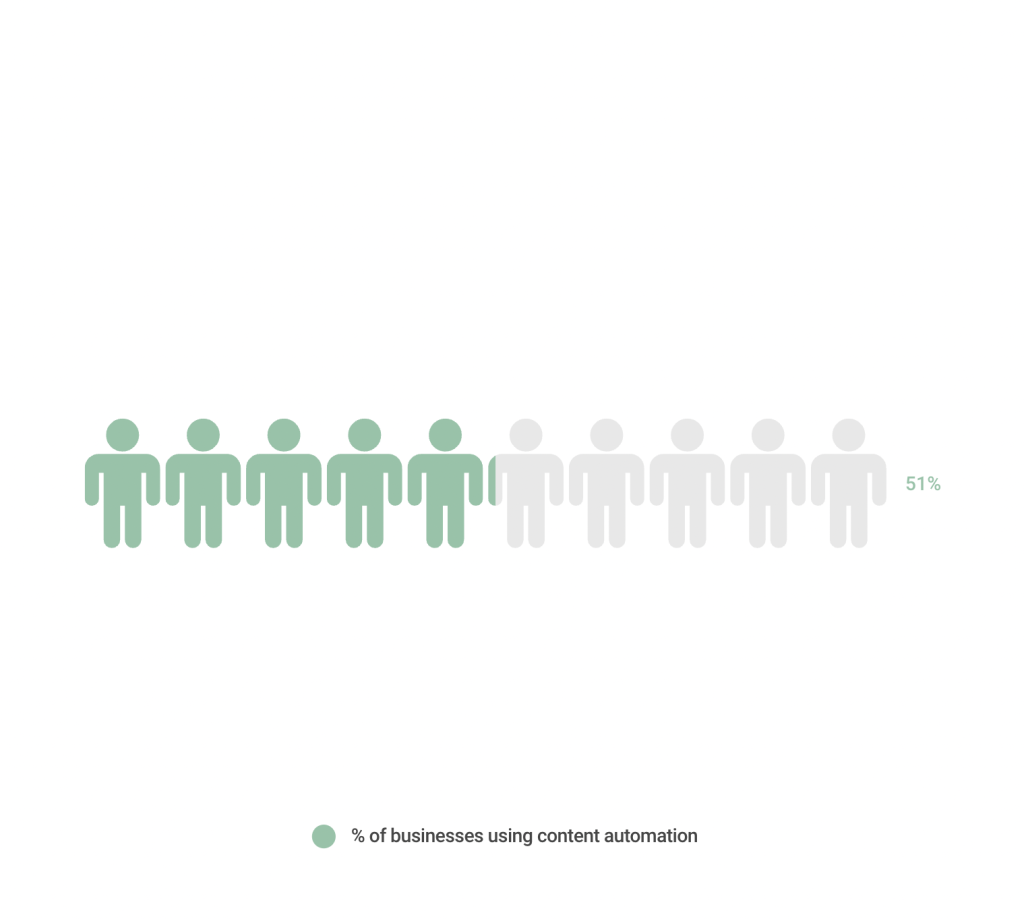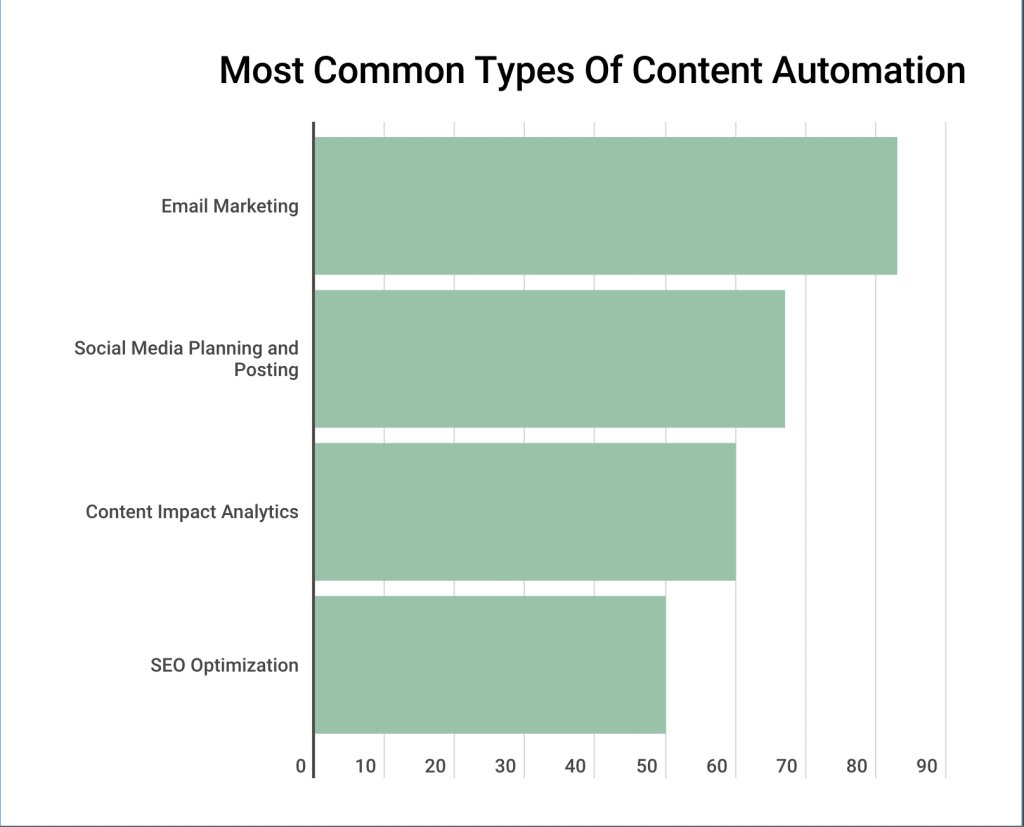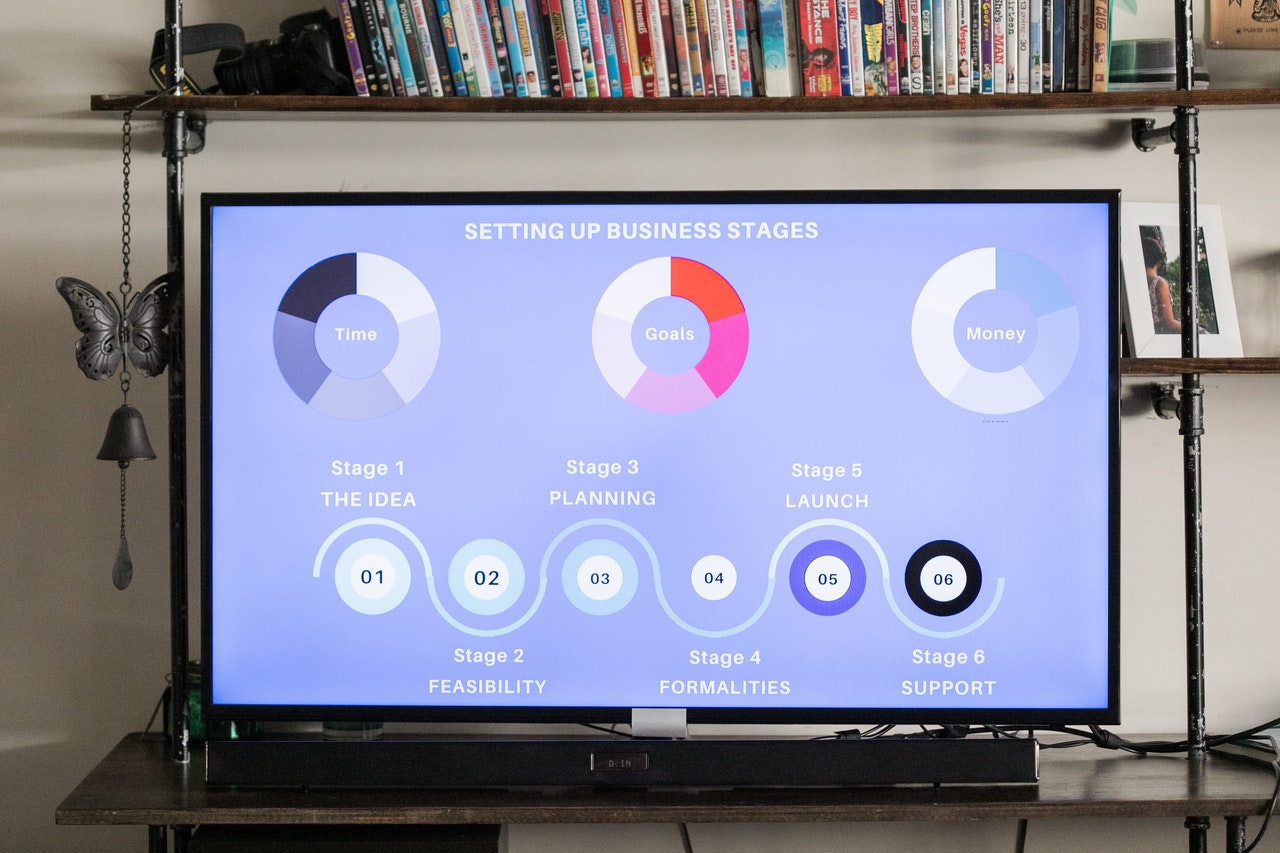Content Automation in Marketing Strategy: Why Does It Matter?
In 2022, marketing strategies are as elaborate as ever, trends are fast-paced, and it might be difficult to get ahead of your competitors even with a top-notch product, a competent team, and interesting ideas. One way to bring the odds in your favor is by introducing content automation.
Quick Links
Content automation is a marketing strategy and a set of digital tools that allow replacing manual processes with automated ones, effectively removing or minimizing human intervention. Naturally, not all content-related tasks can be automated, and manual human work is essential for content creation. However, automation is available at every step: from text planning to publishing and keeping track of the content’s impact. When done right, content automation helps to save time and money and makes content creation more effective.

The outcome of content automation is quite impressive as far as the stats are concerned. Over half of businesses in the United States report using content automation at least in some capacity. Out of those companies, about 63 percent are believed to beat their competitors when it comes to the return on investment and revenues. At least 80 percent of customers observe an improvement when it comes to the generation of leads, and around the same number of people see an increase in conversions. Email newsletters and social media planning are among the most popular content automation tools used today.

Content automation has a lot of benefits for digital marketing. Let’s focus on them in more detail. But first, we need to briefly outline how content automation is used in a marketing strategy.
Here are some classic examples of content automation:
- SEO content optimization to make sure that the content is search-engine and target-audience-friendly.
- Automatically content creation using AI content generator. Tools like this are used to create straightforward content, such as social media posts. AI tools cannot generate more complex think pieces, and AI content generation still requires more human attention than other types of automation. AI content generators are also helpful for recommending strategies that predict and personalize content.
- Proofreading content for grammar, spelling, and stylistic mistakes with online writing software tools.
- Automatically paraphrasing content with aggressive synonymization and sentence inversion to create “unique” content from anything already published on the web.
- Automatically translating content into other languages or
- Converting content into other media forms, like audio or video. Currently, the possibility of expanding a variety of content forms helps to attract the attention of different audiences. E.g, busy people will prefer to listen to new information while they are on the road or doing anything else, and the young generation like video content the most.
- Distributing content across several social media platforms while following an automated schedule from a content or social media calendar.
- Investigating user responses to content and tracking user engagement
- Automating email newsletters sent to customers on a schedule and personalizing those newsletters
- Keeping track of the marketing team workflow with calendars and to-do-lists
Now that we outlined the subtypes of content automation, let’s discover what makes it an excellent component of your digital marketing plan:
It allows writers to focus on less mundane, creative parts of the job.
Content automation allows professionals to switch their attention away from mundane, repetitive tasks to creative and strategic goals that can only be achieved by humans. Instead of constantly tracking social media and proofreading texts for hours, writers can spend more time developing a unique tone of voice for the brand, writing engaging texts, and ensuring high-quality of the content. All of these are arguably more valuable components of the marketing strategy. Content automation leaves time to come up with refreshing new ideas that would enhance your marketing strategy and significantly improve the outcomes for your business. Marketers can also spend time analyzing the data they obtain from content automation.
The time saved on daily content manual tasks can even be used in more creative ways unrelated to marketing activities. Intelligent decisions for business are not always the most straightforward ones. For example, you can invest in team building activities and strengthen personal connections and communication within your team while having a lot of fun.
It improves the workflow and eliminates annoying mundane mistakes that compromise the quality of content.
Overall workflow and being mistake-proof are two crucial things connected most directly. Speaking of workflow, with content automation, you get a superior perspective on what your current process of content creation looks like. This does not only help you to use the time more effectively but makes it easier to identify potential issues and work on improving them.
The improved workflow also means there is less room for annoying errors like grammatical and stylistic mistakes, irrelevant topics, wrong content schedule, not using distribution channels to the max, ignoring SEO best practices, lack of feedback from customers, the lack of social media consistency across platforms, and many others. Unfortunately, these mistakes very often happen in day-to-day marketing tasks when the human factor is involved, regardless of the competence of professionals involved in marketing tasks. While often not serious, these mistakes can still hinder the reputation of your business. Making the content prone to errors with the help of extra tools or proxy servers to save your clients data. makes the workflow more organized and helps build the reputation of the brand as trustworthy.
It allows setting targets and reaching them with more ease.
Elements of your marketing strategy such as SEO strategy, ad campaigns, and targeting are at their absolute best when aided by content automation tools because there are insights that humans could not get without the extra aid of digital tools.
First of all, automation tools allow you to optimize your social media by posting the content at the right time for maximum customer engagement and keeping your content consistent across social media platforms.
Second, automation tools are best at keeping track of customers’ responses to advertising campaigns. All you have to do as the marketer is to use the data presented to you in the best way possible. There is an abundance of tools available for different purposes, and you can discover all types of data regarding your content. You can try them all and find what is the most effective for your business and your unique marketing strategy.
Finally, targeted campaigns are nearly impossible without content automation. The increase in qualified leads as a result of content automation is as staggering as 451 percent. By assisting in targeted campaigns, digital tools serve as the first step in building a stable customer base. Digital tools bring customers to you. Your task is to pick up from there and build a loyal audience with your creativity and strategic endeavors. After that, the only thing is to guide customers through the procurement process.
Final Thoughts
As content marketing is an integral part of overall marketing strategy, content automation is a key driver of successful content marketing implementation. We could not imagine a viable marketing strategy without content automation in 2022. The benefits it gives are simply too obvious to ignore.
The key is to try many variable tools and choose the ones that make the most sense for your business, your team, and your unique goals. With the proper software, you can obtain high-quality content with minimum effort and make your team more productive. So, do not hesitate to develop a plan of content automation implementation.
Good luck!
What Is WooCommerce Product Slider and Why Your Store Needs It
Why Do Product Images Matter So Much in Online Stores? When someone visits an online store the…
0 Comments9 Minutes
How to Streamline Your Customers’ Shopping Experience?
The goal for any online store is to make shopping as smooth as possible. When visitors move…
0 Comments8 Minutes
Strengthening Brand-Customer Relationships Through Gamified Loyalty Programs
Creating lasting connections with customers has become increasingly vital as the marketplace grows…
0 Comments6 Minutes
How to Use SEO and SEA Together in Search Engine Marketing
In digital marketing, search engine marketing (SEM) plays a critical role in improving online…
0 Comments10 Minutes
Content Marketing Growth Hacks: Real Shortcuts to Drive Traffic
Are you still lagging in content marketing? Sticking to these old strategies seems…
0 Comments10 Minutes
How to Build a Strong Local Following Using Social Media Marketing
In the days of likes, shares, and stories, local businesses have a golden opportunity to create…
0 Comments9 Minutes
Why WooCommerce is the Best Choice for Your Online Store?
WooCommerce stands out as a top option for anyone looking to build an online store. This platform…
0 Comments8 Minutes
How to Use AI-Powered SEO Tools for WordPress eCommerce
SEO is a critical factor in the success of any e-commerce WordPress store. As competition…
0 Comments11 Minutes








